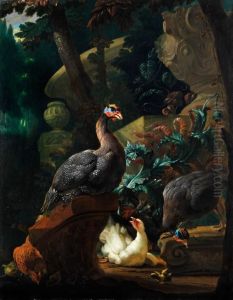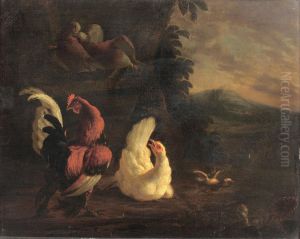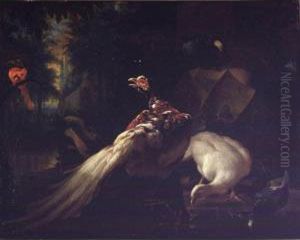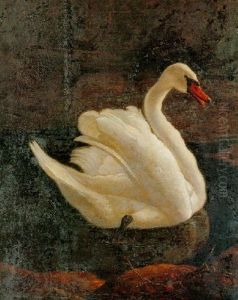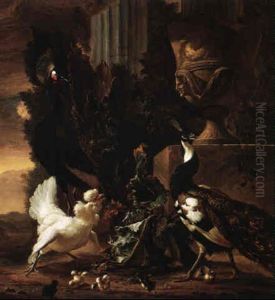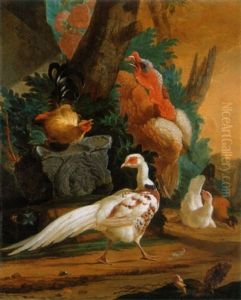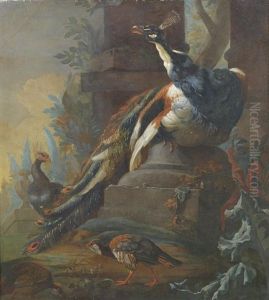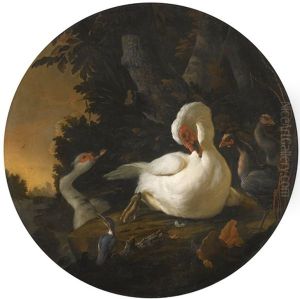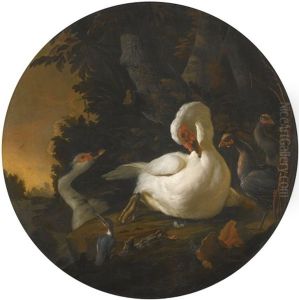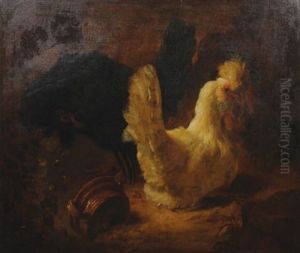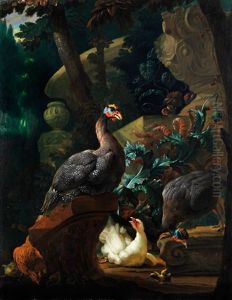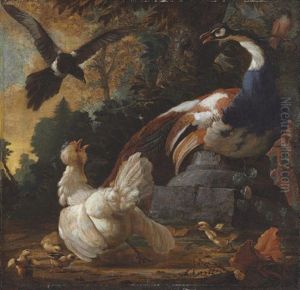Abraham Bisschop Paintings
Abraham Bisschop, also known as Abraham Bisschops or Bisshop, was a Dutch Golden Age painter known for his detailed still lifes and animal scenes, particularly those featuring birds. Born in 1670 in the city of Dordrecht, Netherlands, Bisschop was part of a family of artists, which gave him an early exposure to the world of art. His father, Cornelis Bisschop, was a respected painter of domestic and religious scenes, which likely influenced Abraham's initial artistic direction.
Despite the influence of his family, Abraham Bisschop carved out his unique niche within the Dutch Golden Age painting tradition. He is particularly celebrated for his ability to capture the texture and plumage of birds in his works, making his paintings highly sought after by collectors during his lifetime and in the modern era. Bisschop's talent in depicting the natural world extended to his still life compositions, often integrating flora and fauna with a remarkable degree of realism and attention to detail.
Throughout his career, Bisschop remained primarily in Dordrecht, where he contributed significantly to the city's artistic reputation. His works were characterized by their meticulous detail, vibrant colors, and the life-like portrayal of subjects, which stood as a testament to his keen observation and appreciation of nature. Despite his focus on animal and still life paintings, Bisschop also explored religious themes, a likely nod to his father's influence.
Abraham Bisschop's legacy is preserved through his contributions to the Dutch Golden Age of painting, a period marked by an explosion of talent in the arts within the Netherlands. His paintings continue to be celebrated for their beauty and precision, offering insight into the natural world as seen through the eyes of a 17th-century artist. Bisschop passed away in 1731, leaving behind a body of work that continues to captivate and inspire art lovers and historians alike.




